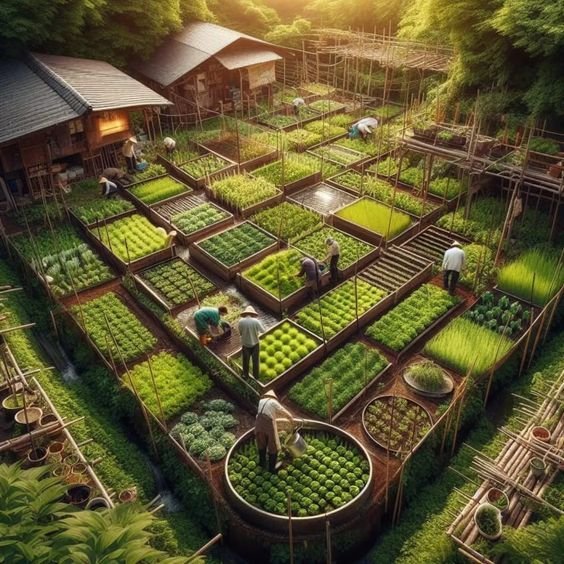
Introduction

Imagine harvesting fresh, home-grown vegetables while contributing to the health of the planet—sustainable gardening offers all that and more. As we become increasingly aware of our environmental impact, the popularity of sustainable gardening is on the rise. Eco-conscious consumers are looking for ways to integrate sustainable living into their daily lives, and gardening presents a practical, rewarding avenue for achieving that goal.
Sustainable gardening is not just a trend; it is a lifestyle choice that promotes eco-friendly habits, reduces carbon footprints, and fosters community involvement. By adopting sustainable gardening practices, you can conserve resources, support local ecosystems, and enjoy the myriad benefits of growing your own food. In this blog, you will learn about eco-friendly gardening practices, innovative trends, and simple steps you can take to start a sustainable garden right in your backyard.
Section 1: What is Sustainable Gardening?

Definition
Sustainable gardening refers to gardening practices that minimize environmental impact while maximizing productivity and biodiversity. It encompasses a range of eco-friendly gardening techniques and organic practices that prioritize the health of the soil, plants, and surrounding ecosystems. Key principles include:
- Minimizing Environmental Impact: Reducing the use of synthetic chemicals and fertilizers, which can harm local wildlife and pollute waterways.
- Using Organic Practices: Emphasizing natural methods for pest control, soil enrichment, and plant care.
- Supporting Biodiversity: Creating habitats for various species, including pollinators like bees and butterflies.
Why It’s Important
Sustainable gardening is crucial for several reasons. It helps conserve water, reduce waste, and promote healthy soil. Traditional gardening methods often rely on chemical fertilizers and pesticides, which can degrade soil quality over time and harm beneficial organisms. By adopting sustainable practices, you can create a thriving ecosystem in your backyard while also contributing to the overall health of the environment.
Core Principles
Some core principles of sustainable gardening include:
- Reducing Chemical Use: Opting for organic fertilizers and natural pest control methods helps maintain soil health and supports biodiversity.
- Composting: Composting organic waste enriches the soil naturally, reduces landfill contributions, and minimizes greenhouse gas emissions.
- Water Conservation: Implementing strategies to conserve water, such as rainwater harvesting and drip irrigation, can significantly reduce your garden’s water footprint.
Section 2: Starting Your Sustainable Garden
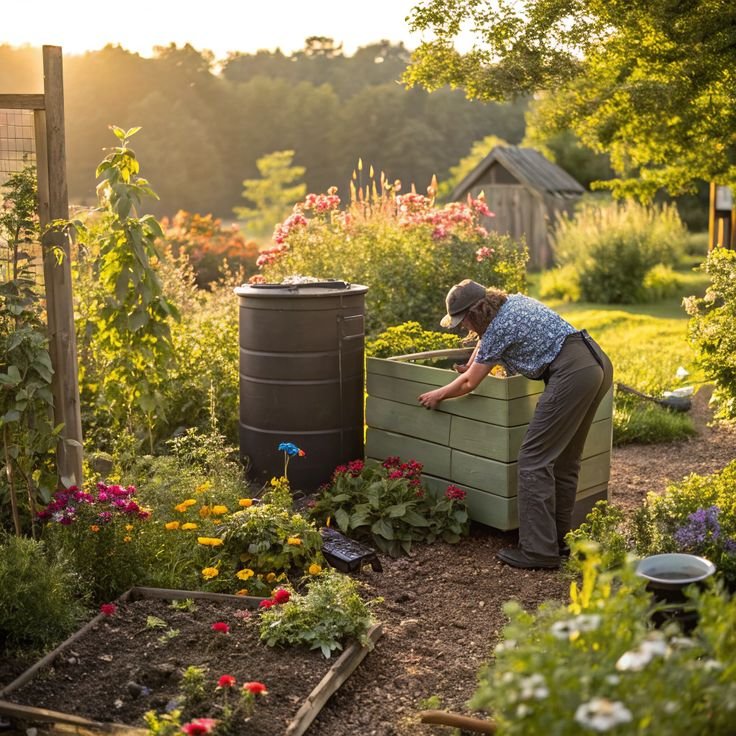
Planning Your Garden
The first step in creating a sustainable garden is careful planning. Consider the layout, the types of plants you want to include, and how to best utilize the available space. Here are some tips for planning a sustainable garden:
- Select Native Plants: Native plants are adapted to the local climate and soil conditions, making them more resilient and less demanding in terms of water and maintenance.
- Reduce Lawn Areas: Traditional lawns require significant water and maintenance. Consider reducing lawn areas and replacing them with native plants, wildflower meadows, or ground covers that support local wildlife.
- Utilize Space Efficiently: Vertical gardening techniques, such as trellises or wall planters, can help maximize small spaces and allow for more diverse plantings.
Choosing the Right Plants
Selecting the right plants is crucial for a sustainable garden. Drought-resistant and native plants require less water and maintenance, making them ideal choices for eco-conscious gardeners. For example, plants like echinacea and lavender not only thrive in local environments but also attract pollinators, enhancing biodiversity.
Designing for Biodiversity
To create a garden that supports local wildlife, consider incorporating a variety of plants and habitats. This can include:
- Flowering Plants: Attract pollinators and beneficial insects.
- Shrubs and Trees: Provide shelter and food for birds and other wildlife.
- Water Features: Small ponds or birdbaths can create habitats for amphibians and birds.
Section 3: Eco-Friendly Practices in the Garden
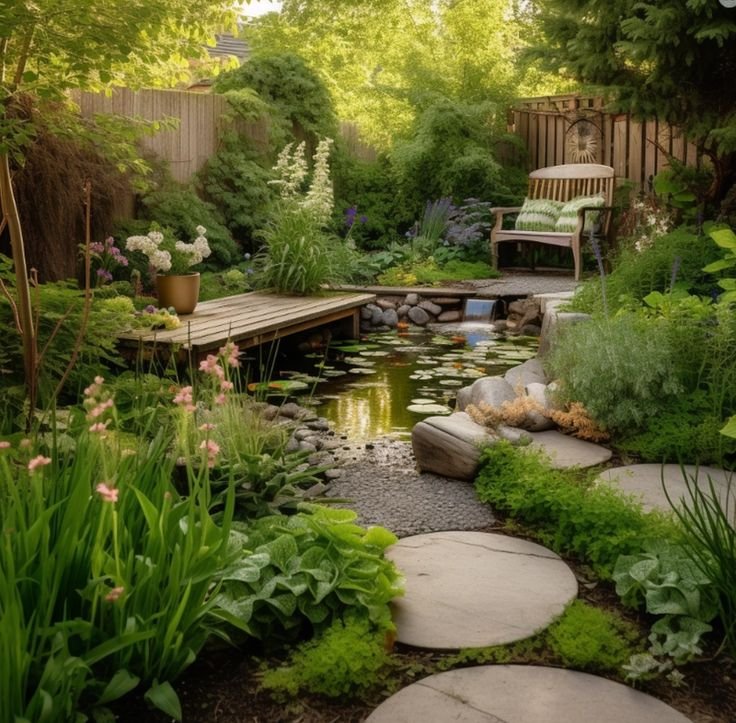
Composting
Composting is a fundamental practice in sustainable gardening. It helps reduce waste by turning organic materials, such as kitchen scraps and yard waste, into nutrient-rich compost. Here are some benefits of composting:
- Soil Enrichment: Compost improves soil structure, enhances nutrient availability, and increases moisture retention.
- Waste Reduction: Composting diverts organic waste from landfills, reducing methane emissions and contributing to a zero-waste lifestyle.
- Cost-Effective: By creating your own compost, you can reduce the need for chemical fertilizers.
Water Conservation
Water conservation is essential for sustainable gardening. Here are some effective strategies:
- Rain Barrels: Collect rainwater from your roof to use for watering your garden. This reduces reliance on municipal water sources and minimizes water bills.
- Drip Irrigation: Implementing a drip irrigation system delivers water directly to the plant roots, reducing evaporation and runoff.
- Mulching: Applying mulch around plants helps retain soil moisture, suppress weeds, and improve soil quality.
Pest Control Without Chemicals
Natural pest control methods can effectively manage pests without harming beneficial insects or the environment. Consider these techniques:
- Beneficial Insects: Attract ladybugs, predatory beetles, and lacewings to your garden, as they feed on common pests like aphids and caterpillars.
- Companion Planting: Planting certain plants together can naturally repel pests. For example, marigolds can deter nematodes, while basil can repel flies and mosquitoes.
Section 4: Creating a Low-Impact Garden

Reducing Waste
Minimizing garden waste is a key component of sustainable gardening. Here are some ways to reduce waste:
- Recyclable Materials: Use recyclable materials for garden projects, such as cardboard for weed suppression or glass jars for starting seedlings.
- Reuse Garden Tools: Repair and maintain garden tools instead of discarding them. Consider sharing tools with neighbors to minimize consumption.
Upcycling and Reusing Materials
Upcycling is an excellent way to repurpose household items into useful garden supplies. Here are some creative ideas:
- Old Newspapers: Use them as mulch to suppress weeds and retain moisture.
- Wooden Pallets: Repurpose pallets into raised garden beds or vertical planters.
Reducing Lawn Areas
Traditional lawns often require significant resources for maintenance. Consider alternatives that support biodiversity:
- Wildflower Meadows: Planting a wildflower meadow can provide habitat for pollinators and reduce mowing frequency.
- Ground Covers: Use low-growing plants that require less water and maintenance than traditional grass lawns.
Section 5: Sustainable Gardening Trends to Watch
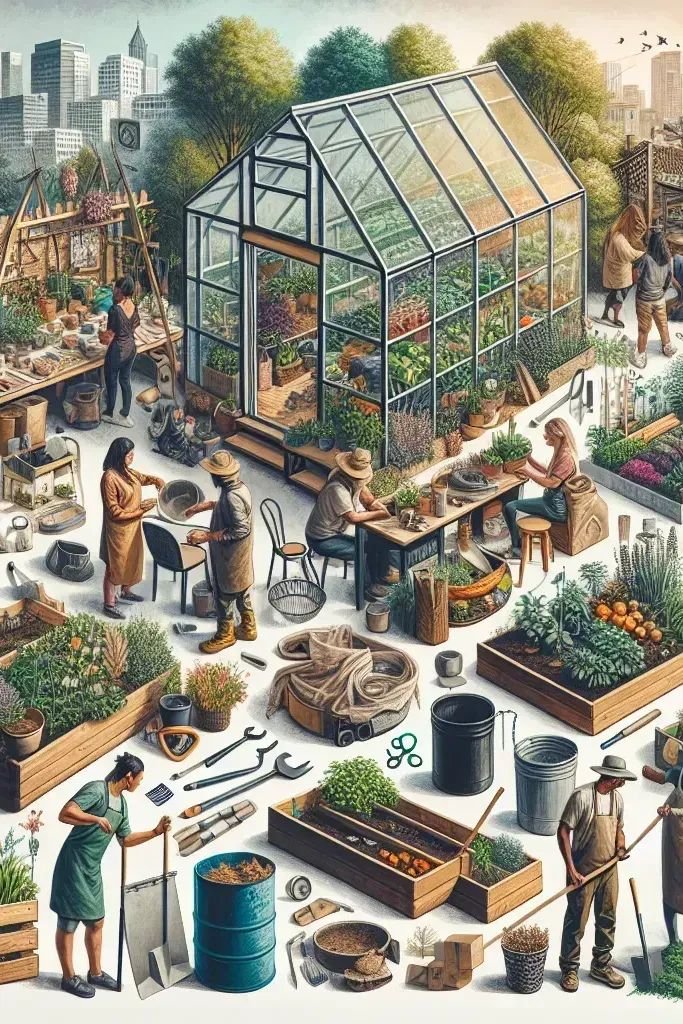
Vertical Gardening
Vertical gardening is an innovative solution for small spaces and urban environments. It allows you to grow vegetables, herbs, and flowers in limited areas. Vertical gardening systems, like living green walls, can beautify urban spaces while providing fresh produce.
Hydroponics and Aquaponics
Hydroponics and aquaponics are soil-free gardening techniques that use minimal water and space. Hydroponics involves growing plants in nutrient-rich water, while aquaponics combines fish farming with hydroponics, creating a symbiotic environment. These methods can be particularly beneficial for urban gardeners looking to maximize yield in small areas.
Permaculture Principles
Permaculture is a holistic approach to gardening that mimics natural ecosystems. By applying permaculture principles, such as creating diverse plant guilds and utilizing natural resources, you can create a self-sustaining garden that requires minimal intervention.
Section 6: The Benefits of Sustainable Gardening
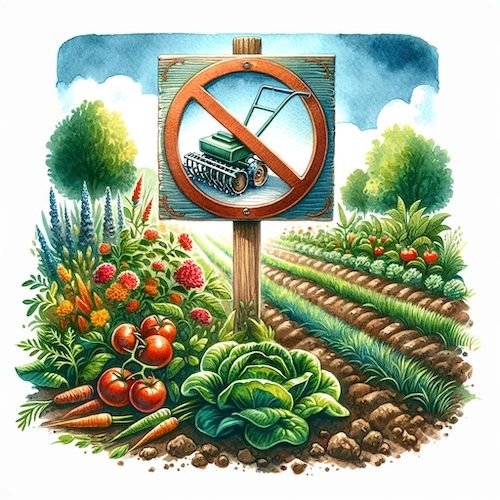
Environmental Impact
Sustainable gardening practices play a vital role in reducing carbon footprints and encouraging biodiversity. By minimizing chemical use, conserving water, and supporting local ecosystems, you can contribute to the fight against climate change and promote a healthier planet.
Health Benefits
Gardening offers numerous health benefits, both physical and mental. Home-grown produce is often fresher and free from harmful chemicals, providing nutritious food for you and your family. Additionally, spending time in nature has been shown to reduce stress, improve mood, and enhance overall well-being.
Community and Education
Sustainable gardening can foster community involvement and provide educational opportunities. Consider starting a community garden or hosting workshops to share knowledge about sustainable practices with neighbors or local schools. These initiatives can strengthen community bonds and inspire others to adopt eco-friendly habits.
Section 7: Overcoming Challenges in Sustainable Gardening
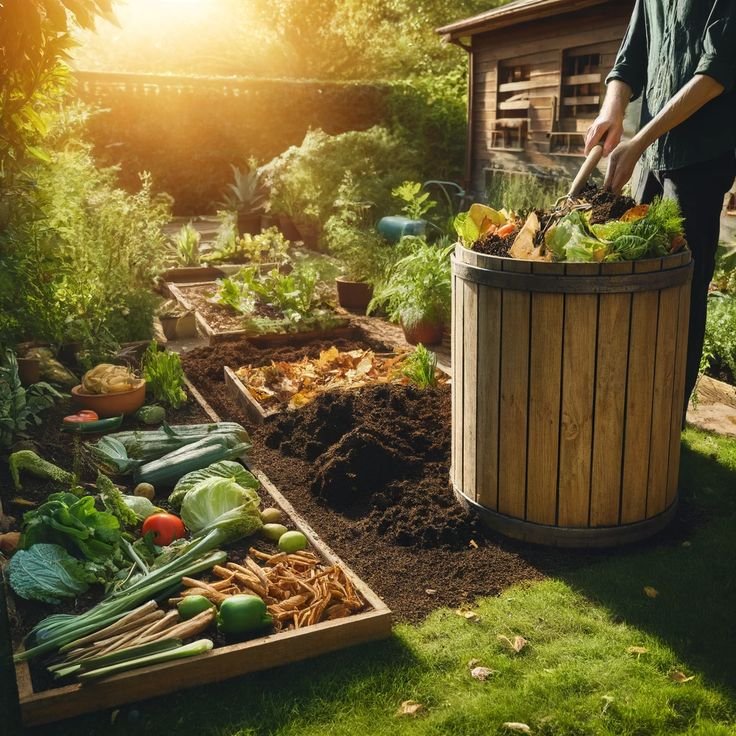
Time and Effort
While gardening requires time and effort, the rewards are well worth it. Acknowledge that establishing a sustainable garden may take time, but once set up, it can thrive with relatively low maintenance. Consider starting small and gradually expanding your garden as you gain experience.
Space Limitations
For those with limited space, container gardening, rooftop gardens, and community gardens are excellent alternatives. Container gardening allows you to grow a variety of plants in small spaces, while community gardens provide opportunities to collaborate with others and share resources.
Common Mistakes to Avoid
To ensure your sustainable gardening journey is successful, be aware of common mistakes:
-
- Over-Watering: Over-watering can lead to root rot and other issues. Monitor soil moisture levels and adjust watering accordingly.
- Choosing the Wrong Plants: Selecting plants that are not suited for your local climate can lead to frustration. Research native plants and their requirements before planting.
- Neglecting Soil Health: Healthy soil is the foundation of a successful garden. Regularly amend your soil with compost and organic matter to maintain its health.
Conclusion

In summary, sustainable gardening is an impactful way to contribute to a healthier planet while enjoying the many benefits of growing your own food. By adopting eco-friendly gardening practices, you can reduce your environmental impact, conserve resources, and support local ecosystems. Whether you start small with a few native plants or dive into composting, every step you take toward sustainable gardening is a step toward a greener future.
Now is the time to take action! What will you plant first? Sustainable gardening is an investment in the planet’s future—and yours. Embrace this opportunity to create a flourishing garden that benefits both you and the environment.
Bonus Section: Resources for Sustainable Gardening
- Books: “The Sustainable Garden” by John Jeavons.
- Websites:www.ecobegginer.com
- Tools: Compost bins, rain barrels, organic fertilizers

Our planet is begging from us; its once lush woodlands are vanishing, its seas are drowning in plastic, and its atmosphere is tainted with the murk of pollution. The splendor we once took for granted is swiftly disappearing, and if we don’t act now, we might lose it forever. The moment to take action is now. We cannot afford to remain passive while the cherished Earth is on the verge of irreversible harm. The Earth is not merely our residence—it shelters every living being, and its decline will influence future generations. We must unite to protect it before it’s too late. Let’s rise and advocate for the planet, its future, and all the lives it nurtures.
At Eco Beginner, we are committed to making this battle a bit easier and significantly more effective. We provide a diverse selection of eco-conscious, print-on-demand products, ranging from cozy cushions and trendy t-shirts to delightful mugs, wall art, lockets, puzzles, and much more. Every product we offer is crafted to facilitate a more sustainable lifestyle while still infusing joy and beauty into your everyday routine. When you choose to buy from us, you are making a deliberate decision to support a greener tomorrow.
Not only will you be acquiring distinctive, high-quality items, but you will also support a brand that genuinely cares about the environment. All of our products are designed with sustainability in focus, ensuring that every purchase you make aids in preserving the planet for future generations.
Every step you take with us brings you closer to a brighter, more sustainable future. In addition to our eco-friendly offerings, we are thrilled to introduce our new book on sustainable living. This book is an all-encompassing guide, brimming with practical insights, heartfelt counsel, and motivating tales to help you adopt a more eco-friendly lifestyle. By supporting us, you’re not just acquiring a product—you’re also endorsing a movement aimed at change.
Moreover, 50% of our profits are donated to charitable organizations, aiding those in distress and promoting environmental initiatives that can help heal the planet. Everything we produce is eco-friendly, and each purchase you make contributes to a lasting change in the world around us.
When you opt for Eco Beginner, you’re selecting more than just a product. You’re becoming part of a community that’s dedicated to rescuing the Earth, one mindful decision at a time. Together, we can create an impact—let’s unite and embody the change we urgently need. Thank you for joining us on this journey.
And even if you can’t buy anything today, you can still assist us in spreading the word! Just click on the ads on our site to support our cause. Every small action adds up, and your participation helps us reach a wider audience and create an even greater impact. Thank you for your on going support!



